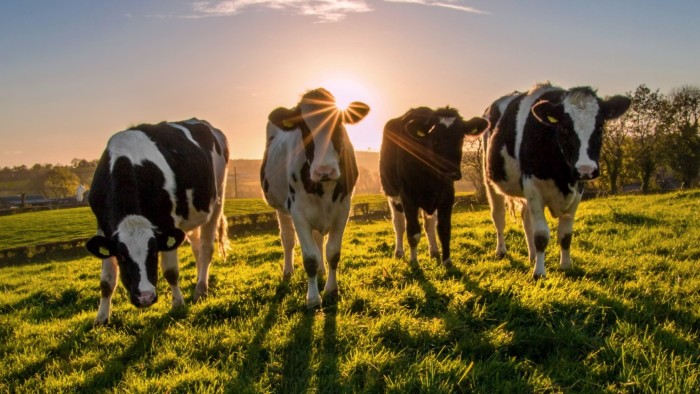How milk got its mojo back

Stay informed with free updates
Simply sign up to the Agriculture myFT Digest — delivered directly to your inbox.
Milk is back. Cow’s milk that is.
It’s been a tough couple of decades for the liquid white stuff. Under fire from climate activists, animal rights groups and diet gurus concerned about fat content, US dairy milk consumption has halved since the 1970s.
Soy milk and then almond and oat products elbowed their way on to café menus and supermarket shelves. Plant-based milks make up more than 12 per cent of refrigerated milk sales.
Now the dairy industry is getting its mojo back. Traditional milk sales are up 3.5 per cent for the year to May in dollar terms, according to Nielsen IQ, and 2024 saw the first real increase in US dairy milk consumption since 2009. Meanwhile, sales of plant-based milks have declined 8.4 per cent for the two years to May, and shares in Oatly, one of the best known makers, are down 98 per cent from their 2021 highs.
“Milk is winning fair and square in the marketplace, which implies there could be legs to this,” says an ebullient Alan Bjerga of the National Milk Producers’ Federation. A similar trend is showing up in meat, with animal product sales up by double digits and alternatives down even further.
Milk’s change in fortunes holds lessons for other traditional industries that are trying to fend off trendy new challengers.
After years of complaining, and a so far unsuccessful campaign to prevent rivals from using the word milk, the dairy industry has buckled down and started to meet Americans where they are. US dairy companies are investing more than $10bn in dairy processing plants between 2023 and 2027, bolstering their ability to offer the milk products that customers actually want.
Faced with concerns about animal welfare and global warming, the industry responded with net zero carbon promises and humanely raised and organic options. (Their cause was also helped by climate change backlash and broader eco-fatigue.)
Dairy producers also leaned in to changing attitudes about what constitutes healthy food. Two decades ago, the industry suffered mightily when diet gurus such as the authors of Skinny Bitch took aim at dairy’s fat content. But fat fears have receded and today’s health concerns tend to be focused on getting more protein and avoiding ultra-processed foods. Older customers also want calcium and vitamin D.
All of these play to dairy’s advantage. Plant-based drinks are lower in protein and often rely on sweeteners, emulsifiers and stabilisers, while milk has naturally occurring calcium and has been fortified with vitamin D for generations. “Dairy milk has a very clean label while plant milk is more complex,” says John Crawford, milk expert at market research company Circana.
In other words, consumers are returning to the notion that milk, as the old US adverts used to say, does a body good.
The dairy industry has also adapted to overcome one of its biggest weak points: a large share of the US population, particularly people with Asian and Hispanic heritage, cannot digest lactose, so ordinary dairy products make them feel physically ill.
US dairy producers are now wooing these shoppers with a wide variety of lactose-free and reduced milks that have the protein benefits of dairy with an added enzyme that breaks down the lactose. It is the fastest growing milk segment, up 15.5 per cent in the past year. Total American sales just climbed past the entire plant-milk category.
But there are dark clouds looming on the horizon. Ageing dairy herds and bird flu are weighing on production, leading to potential shortages that could easily erode traditional milk’s current 10 per cent price advantage over its plant-based competition.
At the same time, the Trump administration has been making swingeing cuts to the federal agencies that have a role in food safety. The Food and Drug Administration has paused a quality control programme for milk testing, the Department of Agriculture shut down two food safety committees, and the Justice Department disbanded the unit that prosecutes food safety violations.
It does not help that Trump’s health and human services secretary Robert F Kennedy Jr has repeatedly touted the benefits of raw milk, which can harbour salmonella and E. coli and has been linked to tuberculosis.
The FDA says its quality control programme will eventually resume, and that testing of food samples continues at other labs. But the chances are rising of a nasty outbreak of food-borne illness.
Milk producers have invested a lot to bolster dairy’s aura of purity and health. They need to be alert to the risks that short-sighted government cuts could rain on their triumphal parade.




